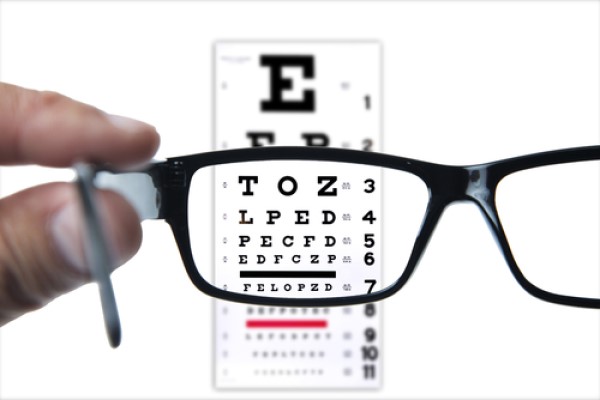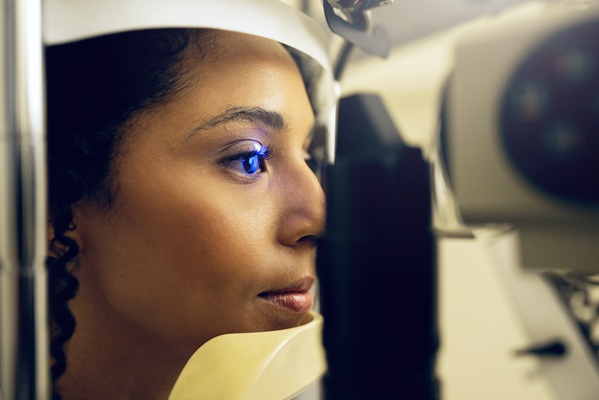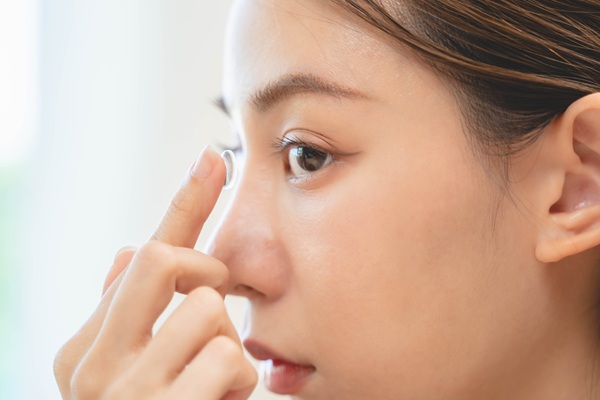What Happens During an Optometry Office Vision Test

Do you need a vision test? Read on to learn more about what happens during a vision test by an optometrist. An optometry office vision test is recommended for patients who are having trouble with their vision, whether their concerns are related to nearsightedness (myopia), farsightedness (hyperopia), eye pressure complications, eye health issues, or another eye-related concern. This review discusses what takes place during an office vision test with an optometrist.
What happens during a vision test?
A vision test, also simply called an eye exam, is a visit with an eye doctor (usually an optometrist) in which the patient’s vision and eye health are tested. This is most commonly performed to assess the patient’s need for eyewear or an alternative procedure or treatment plan to improve vision.
The experience for every patient is unique, but there are certain steps in a vision test that patients can expect to undergo. Notably, patients can expect to discuss their symptoms with the optometrist and go through several tests to determine their visual acuity, eye pressure, and overall eye health.
The patient meets with the optometrist
The first step in the vision test process is usually to meet with the optometrist and discuss with them your vision concerns. Understanding the concerns that the patient is having can help guide the diagnostic process and allow for a more appropriate and effective treatment solution.
A test of your visual acuity
The next step in the vision test process is usually a visual acuity test; this is simply a way to measure the patient’s vision and determine if they need glasses or contact lenses. Most notably, a visual acuity test involves viewing a chart from 14 to 20 feet away and reading letters that are on the chart. The patient reads letters with both eyes and then covers each eye and repeats the process.
The eye doctor can compare the patient’s results to the average patient and determine if their vision is normal or in need of improvement. The most common conditions that are diagnosed from a visual acuity test (along with other diagnostic tests) include myopia (nearsighted) and hyperopia (farsighted).
A test to determine your eye pressure
An optometry office vision test usually also includes a measurement of the patient’s eye pressure. For this test, the eye doctor may give the patient a numbing drop before they examine their eyes. An eye pressure test, among other purposes, can help eye doctors determine the patient’s risk for glaucoma, a condition in which the optic nerves are damaged over time, resulting in blindness or blind spots.
An evaluation of your overall eye health
The eye doctor may also want to examine the patient’s eye health in greater detail. There are multiple tests that the eye doctor may perform based upon the patient’s risk factors. Before any tests are performed to check the patient’s eye health, the eye doctor may recommend the use of dilating drops to help improve the accuracy of the tests.
A vision recommendation and treatment plan
At the end of the eye vision test, the eye doctor should be able to explain to the patient the status of their eye health and make a diagnosis if there are any eye conditions or vision impairments that need to be addressed. Also, after the optometry office vision test, the optometrist can help the patient put together a treatment plan.
For example, if the patient has myopia, then the optometrist may recommend prescription eyeglasses or contact lenses to improve the patient’s vision; there are other treatment options that may be available to improve vision as well, such as laser eye surgery or ortho-k treatment. The optometrist may also recommend tips for improving eye health long-term, such as limiting the use of digital devices to avoid eye strain and practicing good eye hygiene.
After the optometry office vision test
A vision test is generally non-invasive and does not take more than an hour to complete in most cases (although wait times may vary). If necessary, the optometrist can schedule a follow-up visit for additional testing or for the patient to pick up their prescription eyewear or start the treatment process for any eye conditions the patient has.
Get in touch with our office to schedule your vision test
If you are having any difficulties with your vision and would like to schedule a vision test, then reach out to our office via phone or message today.
Get more information here: https://www.texasoptical.net or call Texas Optical at (214) 771-7333
Check out what others are saying about our services on Yelp: Optometry in Dallas, TX.
Recent Posts
For those living with diabetes, undergoing a diabetic eye exam is one of the most important steps in protecting their vision and overall eye health. High blood sugar levels can lead to a range of complications, including conditions that damage the eyes over time. These exams help detect these issues before they become serious, allowing…
Contact lenses provide clear vision and convenience for individuals who prefer an alternative to eyeglasses. However, proper care and maintenance are essential to prevent infections, irritation, and eye damage. Neglecting hygiene practices can lead to serious eye conditions, including corneal ulcers and keratitis. Understanding how to clean, store, and handle contact lenses ensures long-term eye…
Maintaining eye health and preventing long-term issues is the result of consistent and quality vision care. Many people focus on overall wellness but may overlook daily habits that support healthy eyesight. However, taking simple steps each day can protect vision, reduce eye strain, and prevent future complications. By making eye health a priority, it is…
Prescription contacts provide vision correction, comfort, and convenience for those who do not want to wear glasses. However, caring for and wearing contacts takes some getting used to. Learning to insert, remove, and maintain them will help ensure a comfortable and safe experience.Not all contact lenses are the same, and choosing the right pair is…


